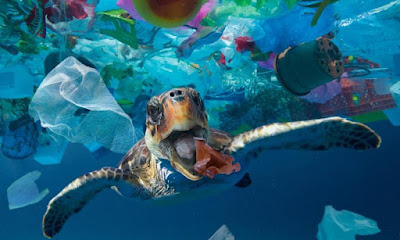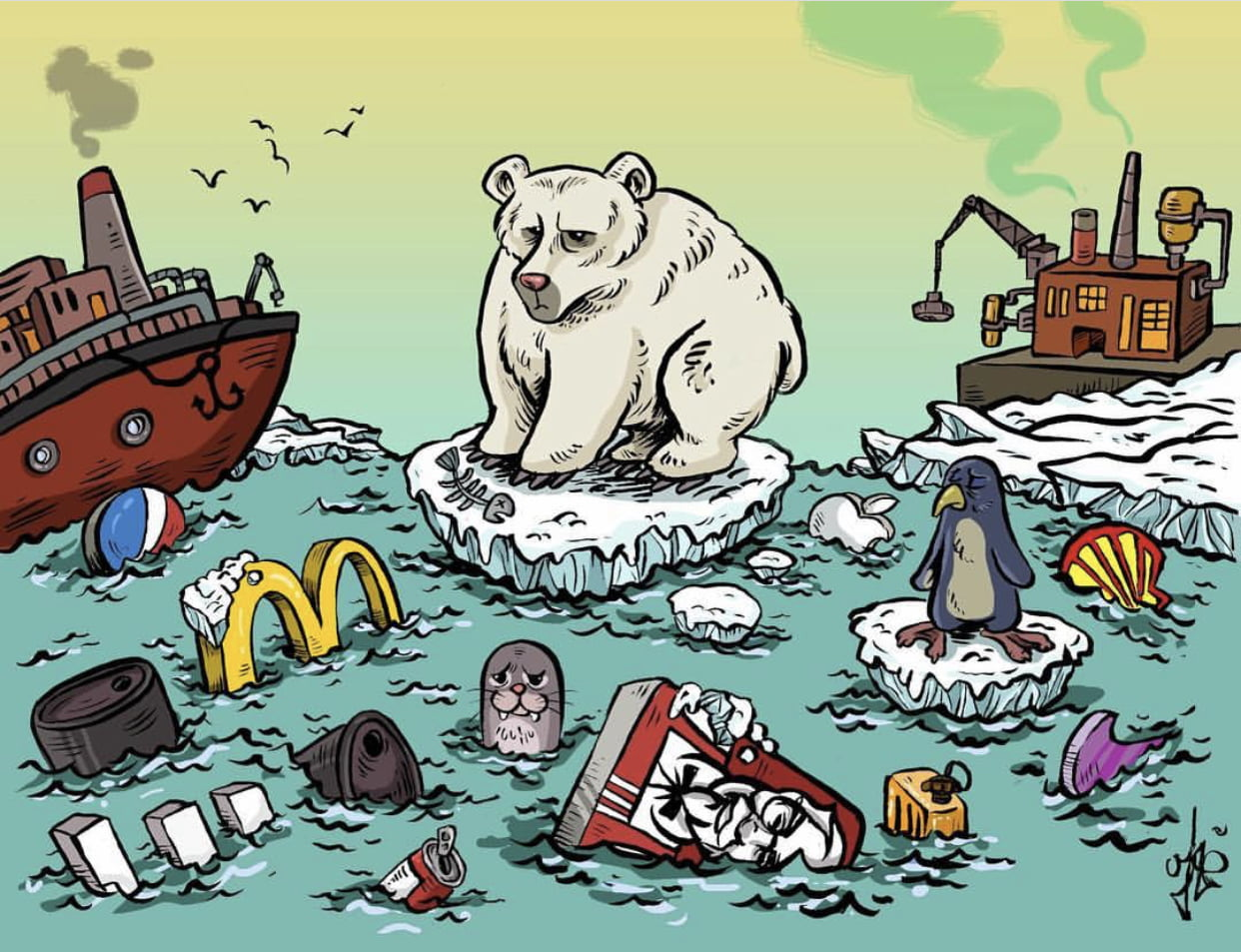Animal Cruelty
"In the shadow of environmental pollution, animals endure a silent cruelty, victims of a world where the cost of human progress is etched in the suffering of the innocent."
What is "Environmental pollution "?
Environmental pollution refers to the introduction of harmful contaminants into the natural environment, causing adverse effects. These contaminants can be in the form of pollutants such as chemicals, particulate matter, noise, or other substances that alter the normal functioning of ecosystems, harm living organisms, and degrade the overall quality of air, water, and soil.
Major types of environmental pollution include air pollution, water pollution, soil pollution, noise pollution, and light pollution. Human activities, such as industrial processes, transportation, agriculture, and improper waste disposal, are significant contributors to environmental pollution. The consequences of environmental pollution can range from harm to human health and wildlife to the disruption of ecosystems and the long-term degradation of the environment. Efforts to mitigate environmental pollution often involve regulatory measures, technological advancements, and public awareness campaigns to promote sustainable practices.
Environmental pollution in context with "Animal Cruelty"
When people make the air and water dirty with things like chemicals and trash, it causes a lot of problems for animals. The places where they live become unhealthy, making it difficult for them to survive and be healthy. So, when we talk about environmental pollution and animal cruelty, it means that the actions of people, like polluting the environment, can unintentionally hurt and cause suffering to animals who are just trying to live in their homes. That's why it's crucial for us to be mindful of our impact on the environment and take steps to keep it clean and safe for all living beings.
Major cause of Environmental pollution affecting Animal Cruelty.
While animal cruelty itself is not a major cause of environmental pollution, certain practices related to animal agriculture and industrial activities can contribute to environmental degradation. Large-scale farming operations, for example, can generate significant amounts of waste, including manure and runoff containing harmful chemicals, which may contaminate water sources and contribute to water pollution.
Additionally, deforestation and habitat destruction, often associated with human activities including agriculture and logging, can lead to the displacement and harm of wildlife. The loss of natural habitats can disrupt ecosystems, contributing to biodiversity loss and impacting the delicate balance of the environment.
It's important to note that animal cruelty itself is not a major cause of environmental pollution. However, certain practices related to animal agriculture and industrial activities can contribute to environmental degradation. Here are some points to highlight the connections:
1. Industrial Agriculture Practices:
- Intensive Farming: Large-scale animal farming operations often produce significant amounts of waste, including manure, which can contribute to water pollution if not properly managed.
- Chemical Runoff: The use of pesticides and fertilizers in agriculture can lead to chemical runoff, affecting water quality and aquatic ecosystems.
2. Deforestation and Habitat Destruction:
- Land Use Changes: Clearing land for agricultural purposes or logging can lead to habitat destruction, displacing wildlife and disrupting ecosystems.
3. Transportation and Carbon Footprint:
- Animal Agriculture Transportation: The transportation of animals and animal products over long distances contributes to greenhouse gas emissions, which contribute to air pollution and climate change.
4. Overfishing:
- Disruption of Aquatic Ecosystems: Overfishing and destructive fishing practices can disrupt marine ecosystems, affecting water quality and biodiversity.
5. Illegal Trade and Poaching:
- Habitat Disruption: Illegal activities such as poaching and wildlife trafficking can disrupt ecosystems and contribute to the decline of certain species.
6. Wildlife Habitat Loss:
- Deforestation and Urbanization: Human activities that lead to the loss of natural habitats also impact wildlife, leading to potential harm and disruption of ecosystems.
It's crucial to recognize that while certain aspects of animal-related activities contribute to environmental issues, the broader concept of animal cruelty isn't a direct cause of environmental pollution. Rather, specific practices associated with industrial agriculture and
related activities can have environmental consequences.
1. Water Pollution:
- Polluted water sources from industrial and agricultural runoff harm aquatic animals.
2. Air Pollution:
- Animals suffer from respiratory issues due to pollutants released into the air.
3. Habitat Destruction:
- Animals lose homes and face displacement because of deforestation and pollution.
4. Climate Change:
- Altered climates disrupt habitats and migration patterns for various animals.
5. Food Chain Disruption:
- Contaminated food sources affect animals throughout the food chain.
6. Health Issues:
- Exposure to pollutants causes diseases and disorders in animals.
7. Noise Pollution:
- Excessive human noise disrupts natural animal behaviors.
8. Displacement and Fragmentation:
- Habitat destruction forces animals to migrate, leading to conflicts and accidents.
9. Toxic Waste Exposure:
- Improper waste disposal results in the accumulation of toxins in the environment.
10. Population Decline:
- Cumulative effects contribute to the decline of certain animal species.

Reducing animal cruelty associated with environmental pollution involves adopting sustainable practices, promoting awareness, and implementing responsible policies. Here are several ways to avoid and reduce such cruelty:
1. Sustainable Agriculture:
- Support and promote sustainable farming practices that prioritize animal welfare, reduce pollution, and use environmentally friendly methods.
2. Waste Management:
- Properly manage and dispose of waste, especially in industries and agriculture, to prevent the contamination of water sources and soil.
3. Reducing Plastic Use:
- Minimize the use of single-use plastics to prevent environmental pollution that can harm wildlife through ingestion or entanglement.
4. Renewable Energy Sources:
- Advocate for and support the use of renewable energy sources to reduce the environmental impact of energy production, which can affect wildlife habitats.
5. Conservation and Habitat Protection:
- Support and participate in conservation efforts to protect natural habitats, preventing habitat destruction and safeguarding the well-being of animals.
6. Responsible Fishing Practices:
- Promote sustainable and responsible fishing practices to avoid overfishing and protect marine ecosystems.
7. Environmental Education:
- Increase awareness about the link between environmental pollution and animal cruelty through education and outreach programs.
8. Wildlife Rehabilitation and Rescue:
- Support organizations involved in the rescue and rehabilitation of animals affected by pollution, helping them recover and return to their natural habitats.
9. Advocate for Stricter Regulations:
- Advocate for and support the implementation of stricter environmental regulations to hold industries accountable for their impact on animals and ecosystems.
10. Public Awareness Campaigns:
- Support and participate in public awareness campaigns that highlight the connection between environmental pollution and animal well-being.
Remember, individual actions collectively contribute to meaningful change. By fostering a culture of environmental responsibility and compassion towards animals, we can work towards a healthier, more sustainable coexistence with the natural world.
~ Abishek kumar T.S



Comments
Post a Comment